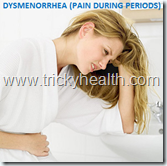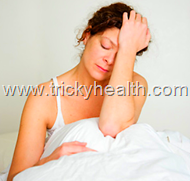COMMON HEALTH PROBLEM OF WOMAN
Women are having many Health problems than men.  They are having additional problems related to their menstrual cycle, pregnancy, post partum period (after delivery) & many more other systems which differentiate their problems from the men. It is very important for the women to have knowledge regarding these health problems & their prevention & management. Making a woman knowledgeable regarding her health can benefit the whole family. The awareness of own health can benefit a woman to perform her roles & responsibilities more efficiently & smoothly. Here in this article of women health care education we are discussing different problems related to menstrual cycle (menses) like Dysmenorrheal (painful menses), menstrual hygiene, amenorrhea (absence of menses), menorrhagia (excessive bleeding), metrorrhagia (irregular bleeding) & menopause (cessation of menses).
They are having additional problems related to their menstrual cycle, pregnancy, post partum period (after delivery) & many more other systems which differentiate their problems from the men. It is very important for the women to have knowledge regarding these health problems & their prevention & management. Making a woman knowledgeable regarding her health can benefit the whole family. The awareness of own health can benefit a woman to perform her roles & responsibilities more efficiently & smoothly. Here in this article of women health care education we are discussing different problems related to menstrual cycle (menses) like Dysmenorrheal (painful menses), menstrual hygiene, amenorrhea (absence of menses), menorrhagia (excessive bleeding), metrorrhagia (irregular bleeding) & menopause (cessation of menses).
DYSMENORRHEA: Dysmenorrhea is menstrual pain means the pain which occurs during menses, it is normal for most of the women to have mild pain during menses but some of the women have severe type of pain, here the most important thing is that this pain interferes with the normal daily life activities means these pains decrease the daily life activities efficiency by interfering with them. As by splitting the word Dysmenorrhea we can come to know the meaning that is dys + menorrhea, dys means difficult & menorrhea means menses so in simple terms it is difficult menses. They are having additional problems related to their menstrual cycle, pregnancy, post partum period (after delivery) & many more other systems which differentiate their problems from the men. It is very important for the women to have knowledge regarding these health problems & their prevention & management. Making a woman knowledgeable regarding her health can benefit the whole family. The awareness of own health can benefit a woman to perform her roles & responsibilities more efficiently & smoothly. Here in this article of women health care education we are discussing different problems related to menstrual cycle (menses) like Dysmenorrheal (painful menses), menstrual hygiene, amenorrhea (absence of menses), menorrhagia (excessive bleeding), metrorrhagia (irregular bleeding) & menopause (cessation of menses).
They are having additional problems related to their menstrual cycle, pregnancy, post partum period (after delivery) & many more other systems which differentiate their problems from the men. It is very important for the women to have knowledge regarding these health problems & their prevention & management. Making a woman knowledgeable regarding her health can benefit the whole family. The awareness of own health can benefit a woman to perform her roles & responsibilities more efficiently & smoothly. Here in this article of women health care education we are discussing different problems related to menstrual cycle (menses) like Dysmenorrheal (painful menses), menstrual hygiene, amenorrhea (absence of menses), menorrhagia (excessive bleeding), metrorrhagia (irregular bleeding) & menopause (cessation of menses).
Definition of Dysmenorrhea: “Dysmenorrhea is a medical condition characterized by the pain during menses which is of severe type & interferes with normal daily life activities.”
1). PRIMARY DYSMENORRHEA: Primary Dysmenorrhea is the painful menstruation without any pelvic pathology means in this type woman is not having any gynecological problem (any reproductive tract problem). This is the most common type of dysmenorrhea which affects many women. It is characterized by pain that begins before or after the initiation of menstrual flow & continues for 48 to 72 hours. As women become older, primary dysmenorrhea decreases & resolves after child birth.TYPES OF DYSMENORRHEA:1). PRIMARY DYSMENORRHEA2). SECONDARY DYSMENORRHEA
2). SECONDARY DYSMENORRHEA: Secondary dysmenorrhea is the menstrual pain that is because of some kind of pelvic/gynecological problem or disease such as endometriosis, gynecological tumor or Pelvic Inflammatory Disease. In this type pain starts several days before menses & prolonged to more days as compared to primary dysmenorrhea.
CAUSES OF DYSMENORHEA
The causes of dysmenorrhea are different for the primary & secondary type of dysmenorrhea.
CAUSES FOR PRIMARY DYSMENORRHEA: The main cause of primary type of dysmenorrhea is excessive production of prostaglandin hormone that is responsible for causing the uterine contractions during menstruations & because of these uterine contractions, blood vassals constrict & there will be low blood supply to uterine muscles means low oxygen supply to muscles as blood is carrying the oxygen to the different organs as a result of this there will be vasospasm of uterine vassals as well as the ischemia of the uterine muscles which cause the pain called as primary dysmenorrhea. Anxiety, stress or tensions are also contributing factors for the development of primary dysmenorrhea.CAUSES FOR SECONDARY DYSMENORRHEA: The cause of secondary dysmenorrhea is the presence of other pelvic pathological conditions such as Pelvic Inflammatory Disease, endometriosis, tumors, uterine fibroids or the use of any Intra Uterine Device (IUD) as a contraceptive method. This type can be treated with medications as it is not auto resolved.
SIGN & SYMPTOMS OF DYSMENORRHEA
1). PAIN: Pain is the main symptom of dysmenorrhea. It occurs in the lower abdomen during menstruation, may be felt in your hips or lower back. The pain usually starts before the onset (start) of menses or during the menses & continue to 24 to 72 hours, firstly its intensity increases during first 24 hours & then the pain subside (decrease) during second or third day. The pain can be spasmodic means sharp pelvic pain or can be dull pain.2). Nausea & vomiting3). Constipation or diarrhea4). Felling of fullness of abdomen5). Headache6). Dizziness7). Hypersensitivity to sound, smell & touch8). Fainting9). Fatigue
DIAGNOSIS OF DYSMENORRHEA
How the doctors or any woman can identify that woman having dysmenorrhea, this is very simple to diagnose the dysmenorrhea by following these examinations:
Medical history: if any woman having the above sign & symptoms which interfere with the daily life activities then she is said to be having dysmenorrhea.Pelvic examination: pelvis examination that can be internal or external is performed to rule out any pelvic inflammatory disease, any strictures, any polyp etc. internal pelvic examination is done by introducing the fingers into the vagina only after taking the consent from the client. Speculum examinations & PAP smear tests are done to rule out any pathological condition.Gynaecological ultrasound: this can be performed to rule out any structure abnormalityLaparoscopy: this is done to directly observe the pelvic organs for any structural abnormality.
In the Next article of Women Health Care we will discussed various Treatment methods and Health Care tips for Dysmenorrhea.
CLICK HERE to check out the “Various Health Tips and Treatment Methods of Dysmenorrhea”. (The Link will be active on the Next Day)
